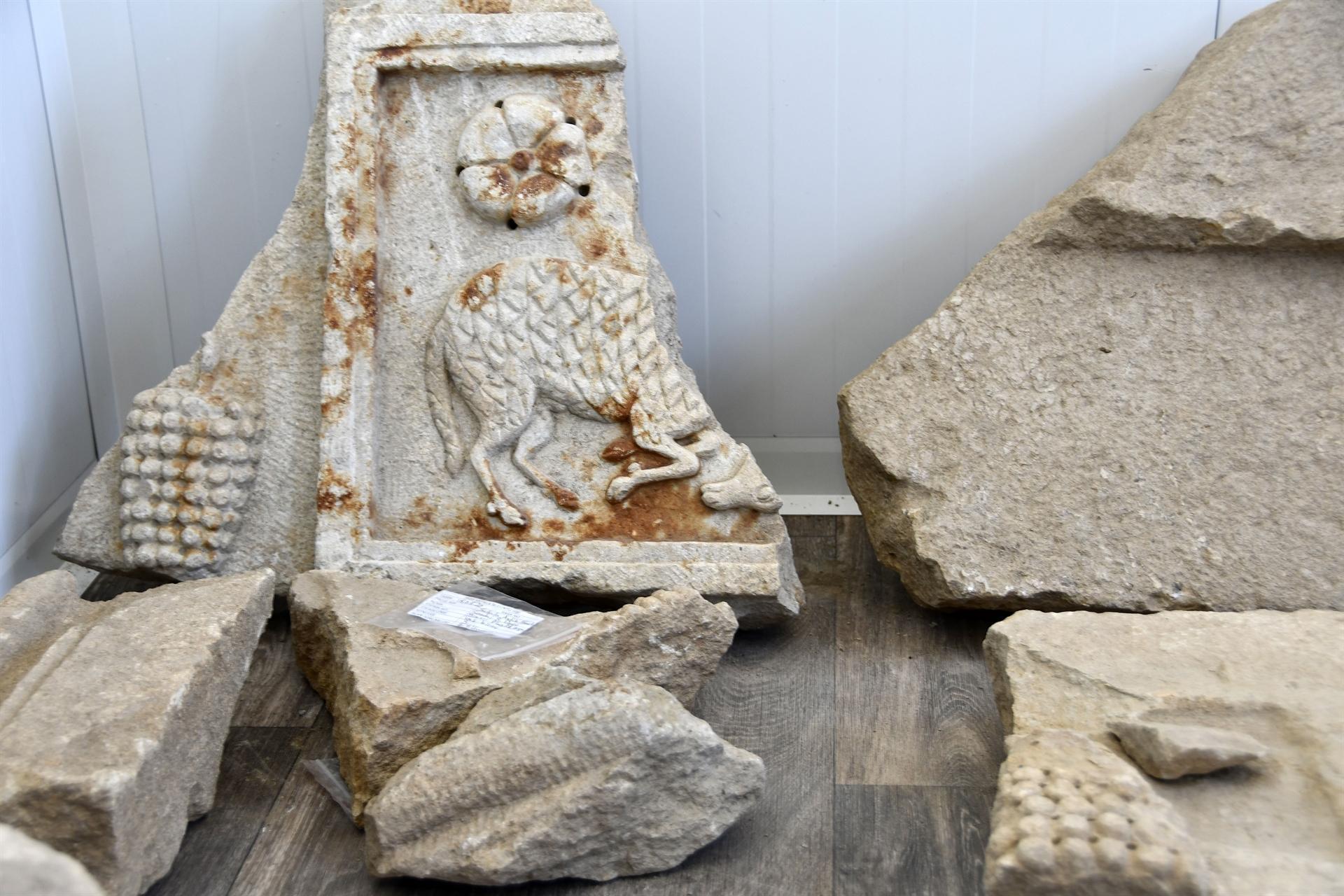
Excavations have been resumed in the ancient city of Satala, one of the four legions of the Roman Empire in Anatolia and used as a military headquarter, to be carried out by a team of 25 people headed by Şahin Yıldırım, Director Associate Professor at Bartın University’s Faculty of Letters, Archeology Application and Research Center.
Excavations in the ancient city in Sadak village of the Kelkit district of the northern province of Gümüşhane will continue for about one and a half months.
During the excavations, a 2,000-year-old theater mask from the Roman Imperial Period, oil lamps, military armor made of iron dating to the Late Roman Period, and architectural reliefs dating to the Early Christian Period were found.
Yıldırım said that the work in the ancient city of Satala has a very important place in terms of the history of the region.
Expressing that they had a very rich excavation season in terms of archaeological findings, Yıldırım said the works were carried out within the fortress located in the Castrum (colonial city surrounded by walls) belonging to Apollinaris XV.
Stating that excavations were carried out in two trenches this season, Yıldırım said, “In the first trench in Castrum, we encountered the destruction phase of the Sassanid King Shapur I, dated to 255-256 A.D. The same phase occurred in Zeugma, another legion city in Anatolia. This shows us that the Roman Legion here was destroyed in the middle of the 3rd century A.D., almost to its last soldier. After this destruction, Roman armies could not recover very easily. In this respect, the Sassanid period destruction layer encountered in this trench in the castrum shows us a historical of 2,000 years ago.”
Noting that they encountered very important architectural structures and their structural elements during the excavations in the fortress region, Yıldırım said, “The castrum structure in Satala had been actively used until the Seljuks conquered the city. In this regard, there are building remains of different periods. The Roman Imperial Period layers are about 6 meters deep from the surface. The first findings of the Legion XV appear from a depth of 5 meters. However, on the higher elevations, there are building remains belonging to the Eastern Roman or Byzantine Empire as it is known. One of the building remains dating to this period was encountered in another trench in the Castrum.
According to the first findings, there is a very important building group here. We are at the beginning of excavations here right now. Therefore, we have not been able to determine the exact function of this building complex. It is a building collection dating back to the 5th and 6th centuries. The architectural elements on it show us that this building had many functions. Again, we see the structures built by Justinian, who also had the Hagia Sophia that one of the Eastern Roman emperors built.”
Noting that the excavation in Satala was the only legionary excavation underway, Yıldırım said, “The findings obtained from the studies in Satala have a very important place in terms of the military history of the Roman Empire. Our knowledge of the legions on the eastern border of the Roman Empire is very limited. During the studies to be carried out in the coming years, it will be possible to reach more important information about this legion. We had a very rich excavation season in terms of theater masks, oil lamps and various architectural reliefs.”